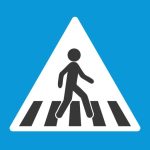Avoidance Learning and Substance Use Disorders

Avoidance learning is a key to human survival and also a major factor in addictive and behavioral disorders. In its simplest expression, avoidance learning is acquiring the knowledge to not touch a hot stove. We are programmed to avoid pain. It does not take many exposures to pain for us to fear its source.
Avoidance learning can sometimes lead to excessive or unwarranted fears. What psychiatrists call maladaptive avoidance can result in anxiety disorders, obsessive/compulsive disorders, and PTSD. A group of researchers reviewing the literature on avoidance learning phrases it this way:
Maladaptive avoidance is in fact a central characteristic of a wide spectrum of mental disorders.
The theory behind avoidance learning follows a Pavlovian arc of conditioning experiments performed on animals. Not surprisingly, animals first learn to avoid shocks, then learn to fear the conditions that precede shocks. You can condition animals to behave in opposition to their natural instincts.
This theory was developed by Robert C. Bolles in the 1970s and became known as the Species-Specific Defense Reactions (SSDRs) theory. The researchers explain:
According to this theory, under a state of fear, organisms are phylogenetically predisposed to emit specific types of responses (e.g., fleeing, freezing, or fighting) rather than others. Bolles went one step further to suggest that for such responses, reinforcement learning is actually unnecessary; the organism just needs to learn that a stimulus predicts an aversive outcome for it to elicit an SSDR.
After Bolles, Seligman and Johnson added expectations to avoidance learning theory: “humans or animals would learn to expect an aversive stimulus if an avoidance response is not performed and not to expect an aversive stimulus if an avoidance response is performed.”
Avoidance learning then causes a defensive reaction in the presence of cues that an unpleasant incident is about to occur. Even when the cues are no longer accompanied by a negative event, the defensive reaction persists. It is only when the defensive reaction is suppressed that the individual learns it is no longer necessary.
Six years after the review of the scientific literature on avoidance learning, Yale researchers tied maladaptive avoidance to substance abuse. In typical New England understatement, they write:
[…] [H]eroin-addicted vs. non-addicted males present exaggerated avoidance behavior that may result in reduced opportunities to obtain rewards.
In this case, the exaggerated avoidance behavior is the need to shoot up or else experience painful withdrawal symptoms. Once the addict has learned that withdrawal is severely painful and that substance use forestalls that pain, it creates a pattern of use that is difficult to break.
Let’s move along to the present day. Last week, JAMA Psychiatry published a report on avoidance learning among opioid users. The study out of Hamburg, Germany, tested 88 patients between December 2021 and October 2024. The study involved people regularly using opioids for chronic pain as well as patients being treated for opioid use disorder (OUD).
The results are that both groups “showed increased learning from negative reinforcement.” This leads researchers to the hypothesis that maladaptive avoidance learning is a result of opioid addiction rather than a cause of it. They also found that the severity of avoidance is proportional to the severity of addiction:
Variations in avoidance learning predicted both their self-reported avoidance behavior in daily life and the severity of compulsive opioid use.
The authors state their results show “that avoidance underpins compulsive drug seeking in opioid addiction.” In conclusion, they state, “Pharmacological modulation of avoidance and psychological interventions targeting negative reinforcement may offer new avenues for improving clinical outcomes.”
Written by Steve O’Keefe. First published November 12, 2025.
Sources:
“Increased Avoidance Learning in Chronic Opioid Users,” JAMA Psychiatry, November 6, 2025.
“Impaired Learning From Errors and Punishments and Maladaptive Avoidance — General Mechanisms Underlying Self-Regulation Disorders?,” Frontiers in Psychiatry, January 25, 2021.
“A Systematic Review of the Inter-individual Differences in Avoidance Learning,” Collabra Psychology, July 3, 2023.
“Avoidance learning: a review of theoretical models and recent developments,” Frontiers in Behavioral Neuroscience, July 20, 2015.
Image Copyright: hummelos.




